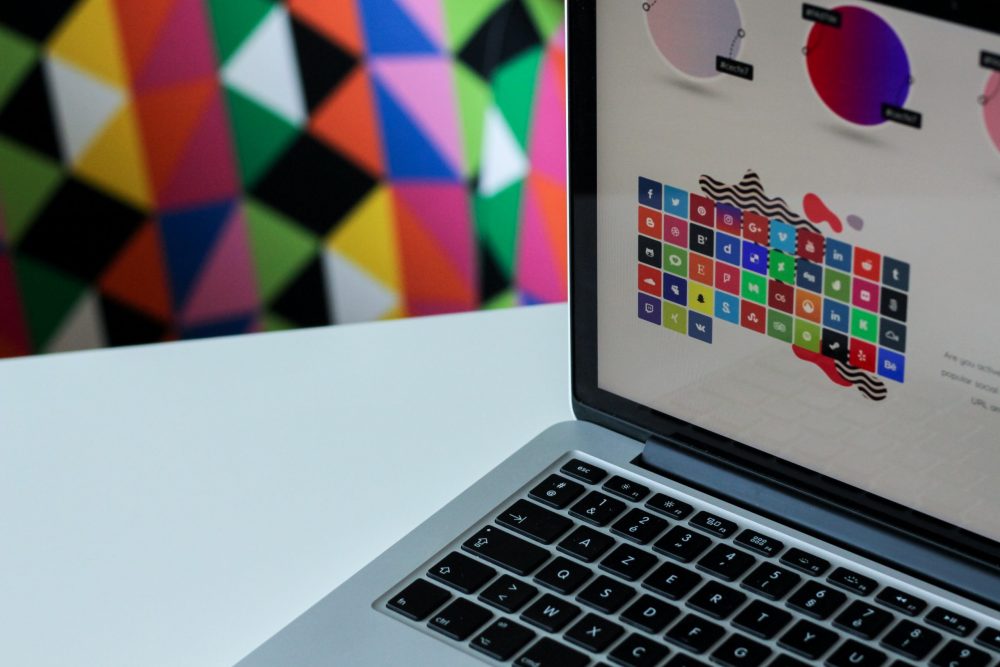This article has been updated and was originally published in December 2019.
You’ve got an impressive, well-designed website — but is it set up to convert?
Here, you’ll find:
- How site design plays into conversion rate optimization (CRO)
- Ideas for reducing online cart abandonment
- How to leverage popular CRO tools
- CRO website design elements to bring you the best results
You know an attractive website is integral for drawing users in, and you’ve taken the time to build one that dazzles.
The design is clean, the images are eye-catching, and you think it’s ready to go. But there could be something missing.
Your website might not be designed to convert.
If you’re seeing a high bounce rate — meaning people are visiting your page and leaving almost immediately — despite a high-quality, easy-to-navigate site, you may want to consider adding in some CRO website design principles.
If you haven’t started designing yet, you can build your site the right way from the ground up and save time later.
Let’s go over what exactly a conversion rate is, why you should care about optimizing it, and some ways you can design your site to improve CRO.

For the vast majority of businesses today, their website is what brings in customers and makes sales. (Image: Unsplash)
Why you should care about CRO website design
While “conversion” means different things depending on your company, industry, and goals, the idea is that a user who takes the action you want once they reach your site is converted.
Say you want them to browse through your e-commerce line and purchase the product that’s right for them, or you’re in the service industry and want visitors to request more info via a form.
In each case, the number of users who do so are conversions, and the number of conversions relative to the total number of people that visit your site is your conversion rate.
That rate is expressed as a percentage. Naturally, you want this to be as high as possible — that’s where conversion rate optimization comes in. For the vast majority of businesses today, their website is what brings in customers and makes sales.
How do I improve my conversion rate?
You can optimize your website for maximum conversions by approaching design with a few simple rules in mind.
Most of these guidelines revolve around user experience (UX) and how intuitive your page is to visitors. You can ensure your site has good UX by:
- Not overwhelming the user with too many choices
- Optimizing your checkout or form submission process
- Not bombarding users with multiple popups
- Taking advantage of heatmapping and click-mapping data
Don’t overwhelm the user with too many choices
This comes down to the paradox of choice: When confronted with an overwhelming number of things to choose from, people tend to burn out and not choose anything.
This may seem counterintuitive — wouldn’t more choices mean happier users? Don’t people want more variety? Not necessarily.
Instead of including images of every clothing item you sell on your homepage and landing pages, for example, consider highlighting just one area (like women’s jeans) every week or so, and letting that item shine.
If you’re worried you may turn people off who aren’t looking for that item, just make sure your top navigation bar makes it clear that there are other items on the site that might be more to their taste.
Targeting a specific demographic not only helps you refine your message, but it lets you speak to the customers most likely to need or want your product.
This also goes for the design of your site: Keep your ideal customers in mind. Don’t confront them with too many call-to-action CTA) buttons and sidebars. Keep it simple by letting them know what’s available and where they can get it. A CRO website design with proper UX principles will guide them through to their purchase
The same idea applies to CTA buttons as well. It’s usually wise to include just one button instead of several. Too many might make it unclear what the user is supposed to do first, and they’ll bounce from your site. Make sure buttons are clearly visible and have strong, concise verbiage.
Pro tip: The CTA is one of the best places to A/B test your pages. Try out different copy, colors, and placement on the page (test one element at a time, of course), then monitor to see what resonates most.
Optimize your checkout or form submission process
You may think you’ve got the customer hooked when they get to the checkout phase, but experienced e-commerce marketers know that’s simply not the case.
Cart abandonment — when people add items to their cart and leave the site or app without completing the sale — is a real issue. In fact, the global rate of cart abandonment is nearly 70%. (It’s even worse for users on mobile devices. They abandon their carts over 85% of the time!)
You want to be sure a customer’s curiosity converts to sales. One way to do that is to refine your checkout or submission process, making it streamlined and easy for the user to complete the desired action. There are several ways to accomplish that, including:
- Minimal data entry fields
- Not having customers enter the same data multiple times
- Prominently displaying shipping charges, taxes, and any other fees associated with the purchase (don’t surprise them at the end)
- Having a preview of the customer’s item in the cart so they can review their purchase
- Including multiple shipping options
Shopify increased its conversions by 1.72 times their normal rate by implementing Shop Pay, a customer information-saving tool and digital shopping assistant that made checkout four times faster.
No one likes a tedious checkout process. With CRO website design, you can make your customers’ buying experience seamless so they don’t give in to second thoughts and click away.
Pro tip: Especially for e-commerce brands, your checkout process shouldn’t be the only thing you optimize. M-commerce (aka mobile commerce) is booming, so make sure your site is responsive across all devices and page speeds are as fast as possible as well.

For the vast majority of businesses today, their website is what brings in customers and makes sales. (Image: Unsplash)
Don’t bombard users with pop-ups
Being met with multiple pop-up ads, especially right away, may annoy potential customers.
This isn’t to say that they’re not effective or shouldn’t be used — it’s all about how, how often, and when.
For instance, maybe you have one pop-up message when a user lands on your page with a special offer or incentive, like 15% off their purchase if they sign up for your email newsletter.
Some companies are ditching the entry pop-up altogether. According to the Online Marketing Institute, it takes 8 interactions with your brand on average before a customer decides to buy, so a pop-up ad probably won’t be the thing to convince them, especially if it’s their first time visiting.
For a happy medium, you can explore exit-intent pop-ups. These activate when a user is about to leave the site after they’ve had a chance to look around. They’ve engaged with your product, know whether or not they like it, and are more likely to commit.
In fact, exit-intent pop-ups can convert up to 4% more visitors and have, in some instances, increased conversions by over 900%.
Take advantage of heatmapping data
Heatmapping software converts your page into a color-coded scale, with the “hotter” colors showing where users spend the most time, and “cooler” colors like blue showing where they spend less or no time at all.
Click-mapping works on the same principle by showing you where on your pages users click the most. Heatmapping can show how far a reader makes it through a post on your blog.
Click-mapping can show you if those CTA buttons are actually working, or if almost no one is motivated to click them.
You can use this data to deduce what part of each page is getting the most traffic, and change your site design if that traffic doesn’t line up with your expectations.
The takeaway
Now that you’ve got a better idea of CRO website design, you can start making the changes you need to get visitors to convert into customers.
These tips can help you build a foundation. From there, you can branch out and research what’s right for you. Just a few optimizations could make a world of difference.

